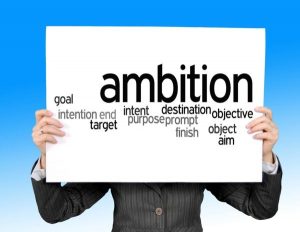Effective work management comes from the right mix of active and passive collaboration methods.
In the new work-from-home reality, organizations have the opportunity to recreate the best work habits from the offline world and implement them digitally. The trick is to identify two main kinds of collaboration — passive and active — and combine them to support the most productive work flow.
Passive collaboration
“Passive collaboration realizes its value when project details and collaborative elements are visible and managed, and when its results are visible and managed well,” said Patrick Rohlfsen, principal consultant for work management software company Wrike, at The MarTech Conference.
These are types of collaboration occur in emails and other messages that don’t require an immediate response. In the old days, they were the assignments that were dropped in a person’s physical inbox at their desk.
“Passive collaboration is becoming more integrated into your [digital] work stream now,” said Rohlfsen. “For a long time now companies have used tickets or request forms to collaborate with clients or employees, but I’m seeing more desire from people now for a simpler way for others to make requests of them.”
A lot of current work management technology deals with supporting passive collaboration, allowing multiple team members to work simultaneously on a project, according to their individual work timelines.
“It’s not uncommon for marketing or IT teams or legal teams to build a request form — something simple that can standardize the requests and integrate them into their work stream,” said Rohlfsen. “The expectation is going to be that if you want me to do something for you, you’re going to need to put your requests in the same place where I manage all the rest of my work.”
Collaboration becomes easier or more efficient when everybody knows where to find it, all in one place. But committing too much work to this passive mode risks taking the “human element” out of work. That’s where active collaboration comes in.
Active collaboration
Active collaboration is those real-time interactions that happened during in-person meetings at offices or on video conference platforms like Zoom.
“Active collaboration realizes its value when you realize the potential we have as human beings,” said Rohlfsen. “The more intentional we are about our relationships, our tendencies, the faster we get to that magic collaborative point. The more thought we give to creating environments and experiences for stakeholders, the better the results can be as project managers.”
Visual cues increase the potential of a breakthrough during active collaboration. To make the most of these occasions when multiple people are actively brainstorming with one another, use a digital whiteboard or encourage screen-sharing.
Also, to make active collaboration more efficient, and more inviting for those who attend, limit the time for these meetings when appropriate. In many cases, the “magic” can happen in a 10-minute meeting. Resist falling back on the default 30-minute time block in people’s digital calendars.
After the active collaboration session, produce some kind of record of the ideas that were shared. Maybe it’s a screenshot of the whiteboard or a video of the meeting. This record has action items that can now be integrated into the passive-collaboration workflow, bridging the two modes of collaboration.
It’s very important to keep in mind that humans have worked face to face since the dawn of time, and when we put our heads together, we can do incredible things. We can deliver projects faster, we can be more efficient with our resources, we produce better products when we work closely together and we collaborate more effectively.
By combining active and passive collaboration, organizations build stronger relationships between team members that communicate actively in real time, while retaining the advantages of passive work that can get done any time.
The post How to improve efficiency by combining two kinds of collaboration appeared first on MarTech.
MarTech(20)







